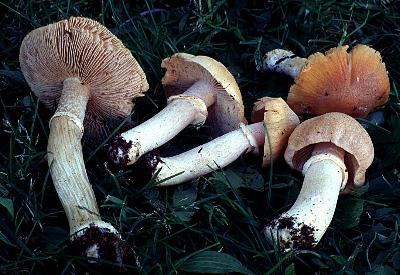 This month's fungus is a delicious edible mushroom known as the gypsy. (I haven't been able to figure out the origin of this name-- anyone know?-- maybe it's because they tend to be scattered all around a forest?). Rozites is named in honor of a European mycologist Ernst Roze, who worked in the early 1900's.
This month's fungus is a delicious edible mushroom known as the gypsy. (I haven't been able to figure out the origin of this name-- anyone know?-- maybe it's because they tend to be scattered all around a forest?). Rozites is named in honor of a European mycologist Ernst Roze, who worked in the early 1900's.